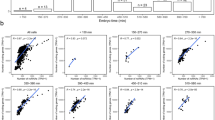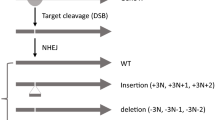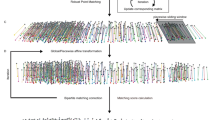Abstract
Genome sequencing projects generate a wealth of information; however, the ultimate goal of such projects is to accelerate the identification of the biological function of genes. This creates a need for comprehensive studies to fill the gap between sequence and function. Here we report the results of a functional genomic screen to identify genes required for cell division in Caenorhabditis elegans. We inhibited the expression of ∼96% of the ∼2,300 predicted open reading frames on chromosome III using RNA-mediated interference (RNAi). By using an in vivo time-lapse differential interference contrast microscopy assay, we identified 133 genes (∼6%) necessary for distinct cellular processes in early embryos. Our results indicate that these genes represent most of the genes on chromosome III that are required for proper cell division in C. elegans embryos. The complete data set, including sample time-lapse recordings, has been deposited in an open access database. We found that ∼47% of the genes associated with a differential interference contrast phenotype have clear orthologues in other eukaryotes, indicating that this screen provides putative gene functions for other species as well.
This is a preview of subscription content, access via your institution
Access options
Subscribe to this journal
Receive 51 print issues and online access
$199.00 per year
only $3.90 per issue
Buy this article
- Purchase on SpringerLink
- Instant access to full article PDF
Prices may be subject to local taxes which are calculated during checkout


Similar content being viewed by others
References
Ross-Macdonald, P. et al. Large-scale analysis of the yeast genome by transposon tagging and gene disruption. Nature 402, 413– 418 (1999).
The C. elegans Sequencing Consortium. Genome sequence of the nematode C. elegans: a platform for investigating biology. Science 282, 2012– 2018 (1998).
Gönczy, P. et al. Dissection of cell division processes in the one cell stage Caenorhabditis elegans embryo by mutational analysis. J. Cell Biol. 144, 927–946 ( 1999).
Fire, A. et al. Potent and specific genetic interference by double-stranded RNA in Caenorhabditis elegans. Nature 391, 806–811 (1998).
Shelton, C. A., Carter, J. C., Ellis, G. C. & Bowerman, B. The nonmuscle myosin regulatory light chain gene mlc-4 is required for cytokinesis, anterior-posterior polarity, and body morphology during Caenorhabditis elegans embryogenesis. J. Cell Biol. 146, 439–451 (1999).
Zhang, B. et al. A conserved RNA-binding protein that regulates sexual fates in the C. elegans hermaphrodite germ line. Nature 390, 477–484 (1997).
Cox, D. N. et al. A novel class of evolutionarily conserved genes defined by piwi are essential for stem cell self-renewal. Genes Dev. 12, 3715–3727 (1998).
Skop, A. R. & White, J. G. The dynactin complex is required for cleavage plane specification in early Caenorhabditis elegans embryos. Curr. Biol. 8, 1110–1116 (1998).
Gönczy, P., Pichler, S., Kirkham, M. & Hyman, A. A. Cytoplasmic dynein is required for distinct aspects of MTOC positioning, including centrosome separation, in the one cell stage Caenorhabditis elegans embryo. J. Cell Biol. 147, 135–150 (1999).
Chase, D. et al. The polo-like kinase PLK-1 is required for nuclear envelope breakdown and the completion of meiosis in Caenorhabditis elegans. Genesis 26, 26–41 ( 2000).
Boxem, M., Srinivasan, D. G. & van den Heuvel, S. The Caenorhabditis elegans gene ncc-1 encodes a cdc2-related kinase required for M phase in meiotic and mitotic cell divisions, but not for S phase. Development 126, 2227–2239 (1999).
Feng, H. et al. CUL-2 is required for the G1-to-S-phase transition and mitotic chromosome condensation in Caenorhabditis elegans. Nature Cell Biol. 1, 486–492 ( 1999).
Rappleye, C. A., Paredez, A. R., Smith, C. W., McDonald, K. L. & Aroian, R. V. The coronin-like protein POD-1 is required for anterior-posterior axis formation and cellular architecture in the nematode Caenorhabditis elegans. Genes Dev. 13, 2838–2851 (1999).
Swan, K. A. et al. cyk-1: a C. elegans FH gene required for a late step in embryonic cytokinesis. J. Cell Sci. 111, 2017–2027 (1998).
Jantsch-Plunger, V. et al. CYK-4. A rho family gtpase activating protein (gap) required for central spindle formation and cytokinesis. J. Cell Biol. 149, 1391–1404 (2000).
Furuta, T. et al. EMB-30: an APC4 homologue required for metaphase-to-anaphase transitions during meiosis and mitosis in Caenorhabditis elegans. Mol. Biol. Cell 11, 1401–1419 (2000).
Etemad-Moghadam, B., Guo, S. & Kemphues, K. J. Asymmetrically distributed PAR-3 protein contributes to cell polarity and spindle alignement in early C. elegans embryos. Cell 83, 743–752 (1995).
Levitan, D. J., Boyd, L., Mello, C. C., Kemphues, K. J. & Stinchcomb, D. T. par-2, a gene required for blastomere asymmetry in Caenorhabditis elegans, encodes zinc-finger and ATP-binding motifs. Proc. Natl Acad. Sci. USA 91, 6108– 6112 (1994).
Nicolas, F. et al. Xenopus Ran-binding protein 1: molecular interactions and effects on nuclear assembly in Xenopus egg extracts. J. Cell Sci. 110, 3019–3030 (1997).
Carazo-Salas, R. E. et al. Generation of GTP-bound Ran by RCC1 is required for chromatin-induced mitotic spindle formation. Nature 400, 178 –181 (1999).
Kalab, P., Pu, R. T. & Dasso, M. The ran GTPase regulates mitotic spindle assembly. Curr. Biol. 9, 481–484 ( 1999).
Wilde, A. & Zheng, Y. Stimulation of microtubule aster formation and spindle assembly by the small GTPase Ran. Science 284, 1359–1362 (1999).
Hetzer, M., Bilbao-Cortes, D., Walther, T. C., Gruss, O. J. & Mattaj, I. W. GTP hydrolysis by Ran is required for nuclear envelope assembly. Mol. Cell 5, 1013–1024 (2000).
Zhang, C. & Clarke, P. R. Chromatin-independent nuclear envelope assembly induced by Ran GTPase in Xenopus egg extracts. Science 288, 1429–1432 ( 2000).
Strome, S. & Wood, W. B. Generation of asymmetry and segregation of germ-line granules in early C. elegans embryos. Cell 35, 15–25 ( 1983).
Swan, A., Nguyen, T. & Suter, B. Drosophila Lissencephaly-1 functions with Bic-D and dynein in oocyte determination and nuclear positioning. Nature Cell Biol. 1, 444–449 ( 1999).
Willins, D. A., Liu, B., Xiang, X. & Morris, N. R. Mutations in the heavy chain of cytoplasmic dynein suppress the nudF nuclear migration mutation of Aspergillus nidulans. Mol. Gen. Genet. 255, 194–200 (1997).
Tye, B. K. MCM proteins in DNA replication. Annu. Rev. Biochem. 68, 649–686 (1999).
Mello, C. C., Kramer, J. M., Stinchcomb, D. & Ambros, V. Efficient gene transfer in C. elegans: extrachromosomal maintenance and integration of transforming sequences. EMBO J. 10, 3959–3970 (1991).
Bairoch, A. & Apweiler, R. The SWISS-PROT protein sequence database and its supplement TrEMBL in 2000. Nucleic Acids Res. 28, 45–48 ( 2000).
Altschul, S. F. et al. Gapped BLAST and PSI-BLAST: a new generation of protein database search programs. Nucleic Acids Res. 25, 3389–3402 (1997).
Tatusov, R. L., Koonin, E. V. & Lipman, D. J. A genomic perspective on protein families. Science 278, 631–637 ( 1997).
Chervitz, S. A. et al. Comparison of the complete protein sets of worm and yeast: orthology and divergence. Science 282, 2022 –2028 (1998).
Snel, B., Bork, P. & Huynen, M. A. Genome phylogeny based on gene content. Nature Genet. 21, 108–110 (1999).
Rose, L. S. & Kemphues, K. The let-99 gene is required for proper spindle orientation during cleavage of the C. elegans embryo. Development 125, 1337– 1346 (1998).
Clark-Maguire, S. & Mains, P. E. mei-1, a gene required for meiotic spindle formation in Caenorhabditis elegans , is a member of a family of ATPases. Genetics 136, 533–546 (1994).
Guo, S. & Kemphues, K. J. A non-muscle myosin required for embryonic polarity in Caenorhabditis elegans. Nature 382, 455–458 ( 1996).
Pichler, S. et al. OOC-3, a novel putative transmembrane protein required for establishment of cortical domains and spindle orientation in the P1 blastomere of C. elegans embryos. Development 127, 2063–2073 (2000).
Guo, S. & Kemphues, K. J. par-1, a gene required for establishing polarity in C. elegans embryos, encodes a putative Ser/Thr kinase that is asymmetrically distributed. Cell 81, 611–620 (1995).
Hung, T. J. & Kemphues, K. J. PAR-6 is a conserved PDZ domain-containing protein that colocalizes with PAR-3 in Caenorhabditis elegans embryos. Development 126, 127–135 (1999).
Raich, W. B., Moran, A. N., Rothman, J. H. & Hardin, J. Cytokinesis and midzone microtubule organization in Caenorhabditis elegans require the kinesin-like protein ZEN-4. Mol. Biol. Cell 9, 2037–2049 (1998).
Powers, J., Bossinger, O., Rose, D., Strome, S. & Saxton, W. A nematode kinesin required for cleavage furrow advancement. Curr. Biol. 8, 1133-1136 ( 1998).
Matthews, L. R., Carter, P., Thierry, M. D. & Kemphues, K. ZYG-9, a Caenorhabditis elegans protein required for microtubule organization and function, is a component of meiotic and mitotic spindle poles. J. Cell Biol. 141, 1159-1168 ( 1998).
Carter, P. W., Roos, J. M. & Kemphues, K. J. Molecular analysis of zyg-11, a maternal-effect gene required for early embryogenesis of Caenorhabditis elegans. Mol. Gen. Genet. 221, 72–80 (1990).
Acknowledgements
For help in improving the manuscript, we thank A. Desai, A. Ephrussi, S. Grill, M. Labouesse, I. Mattaj and B. Sönnichsen. Work in the Hyman laboratory is supported by the EMBL (European Molecular Biology Laboratory) and the MPI (Max-Planck-Institute). P.G. was supported by a fellowship from the Swiss National Science Foundation. A.C. is supported by the UK Medical Research Council.
Author information
Authors and Affiliations
Corresponding author
Supplementary information
Rights and permissions
About this article
Cite this article
Gönczy, P., Echeverri, C., Oegema, K. et al. Functional genomic analysis of cell division in C. elegans using RNAi of genes on chromosome III. Nature 408, 331–336 (2000). https://doi.org/10.1038/35042526
Received:
Accepted:
Issue Date:
DOI: https://doi.org/10.1038/35042526



